Review and photos by OkapiBoy
This review will the be the start of my African themed series that I plan to write in the coming months.
When one thinks of wild places and animals, it is almost certain that vision of Africa and its vast herds of animals comes to mind first. Today, it is the only place on earth where one can still see what many places may have looked like in the past: wide open spaces with vast numbers of animals roaming freely from one place to another, chasing the rains that brings new life. The most impressive assemblage of large and small animals are on full display in these beautiful landscapes.

Today, I am excited to review one animal that inhabits these plains and savanna’s, and also happens to be one of my favorite animal, the Sable antelope.
Although sable antelopes have been popular in the toy figure market for sometime now, it is only within the last few years that we really saw some good figures from the major brands. And when they do get made, it is always the common or southern sable (Hippotragus niger) since it is regarded as your typical subspecies and also the first to be described and named in 1838.
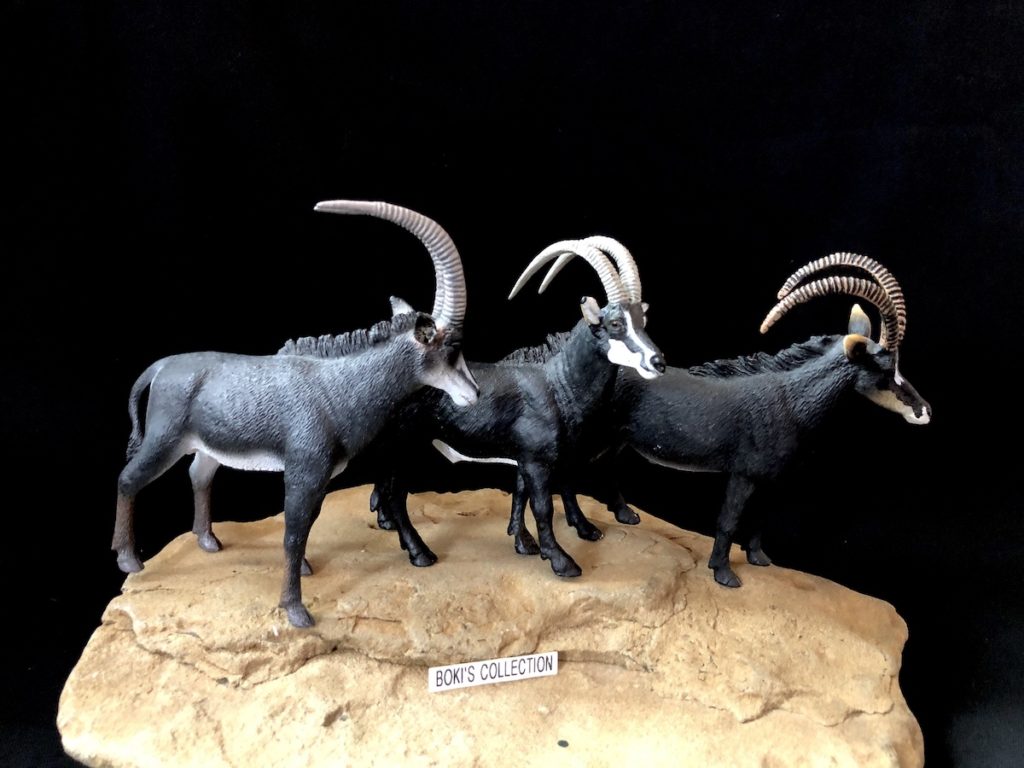
But there are four subspecies of Sable: common sable Hippotragus niger, H. n. kirkii or Zambian sable, H. n. roosevelti or the eastern/Shimba sable.
The fourth one and the subject of our review is the giant sable antelope (H.n. variani) from CollectA.

CollectA is well know for giving obscure and often not represented species a chance on the spotlight, and this is very well supported but the rich diversity of antelopes in their collection.
No other company comes close to CollectA’s impressive herds and the quality of all of their ungulates are simply beautiful and way ahead of the others. They have mastered the art of sculpting antelopes.
So it is no surprise that they went for the most impressive and endangered subspecies of sable.
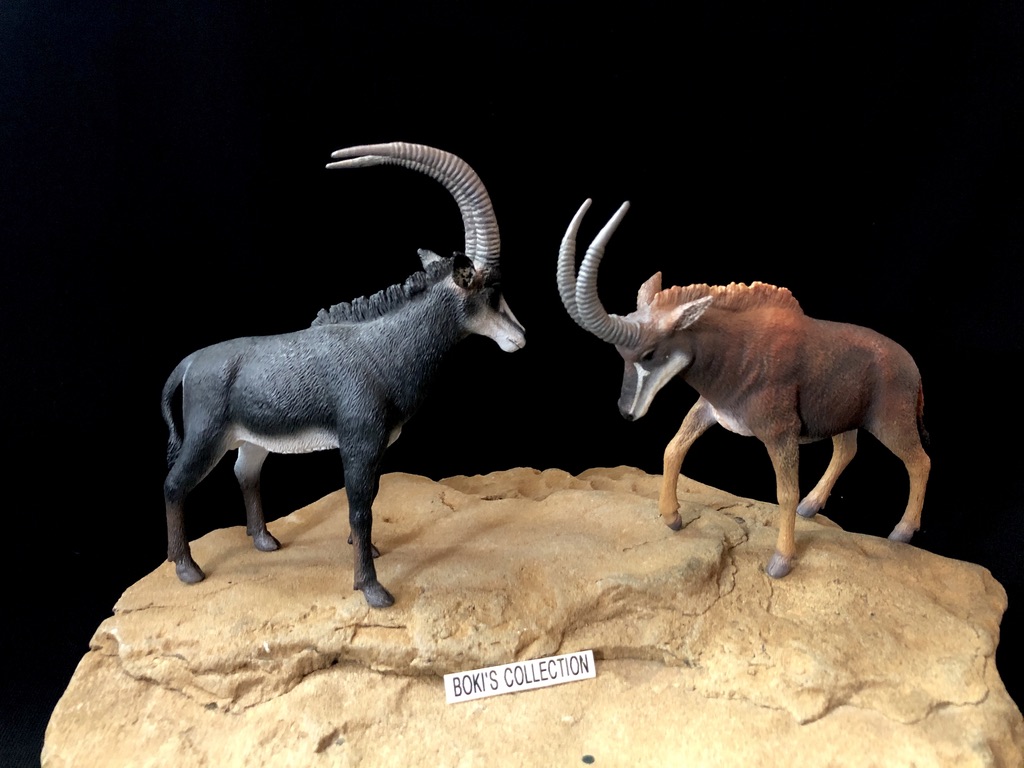
When CollectA decided to make a sable antelope, they took to social media and posted two beautiful prototype of the male antelope, one in the typical head high pose and another in a more active pose with its head bowed down, horns facing forward. CollectA asked fans to choose which one of the two should be the one chosen as the final version for mass release.
It was a hard choice, and I voted and went for the one with its head lowered since it had a more interesting pose.
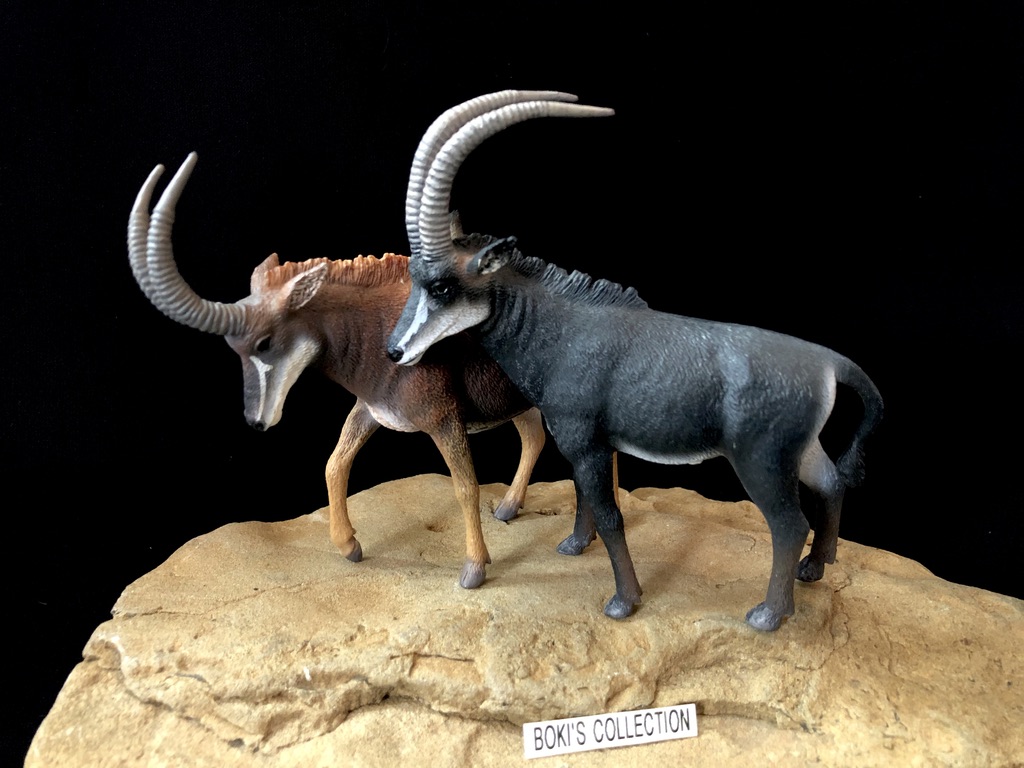
I guess there was overwhelming request from fans to release both. Well CollectA listen and they did end up releasing both. After all why waste a beautiful sculpt?
But instead of having them both be males, they wisely decided to do a slight modification to the other, the one with the head lowered, and turned it into a female. This is a really smart move and made a lot of fans very happy including me.
So this is how we ended up with a male and female giant sable antelope from CollectA.
Sable antelopes are sexually dimorphic, meaning the sexes looks different from each other. The males are larger than the females and also heavier and slightly taller. Both sexes have long horns.
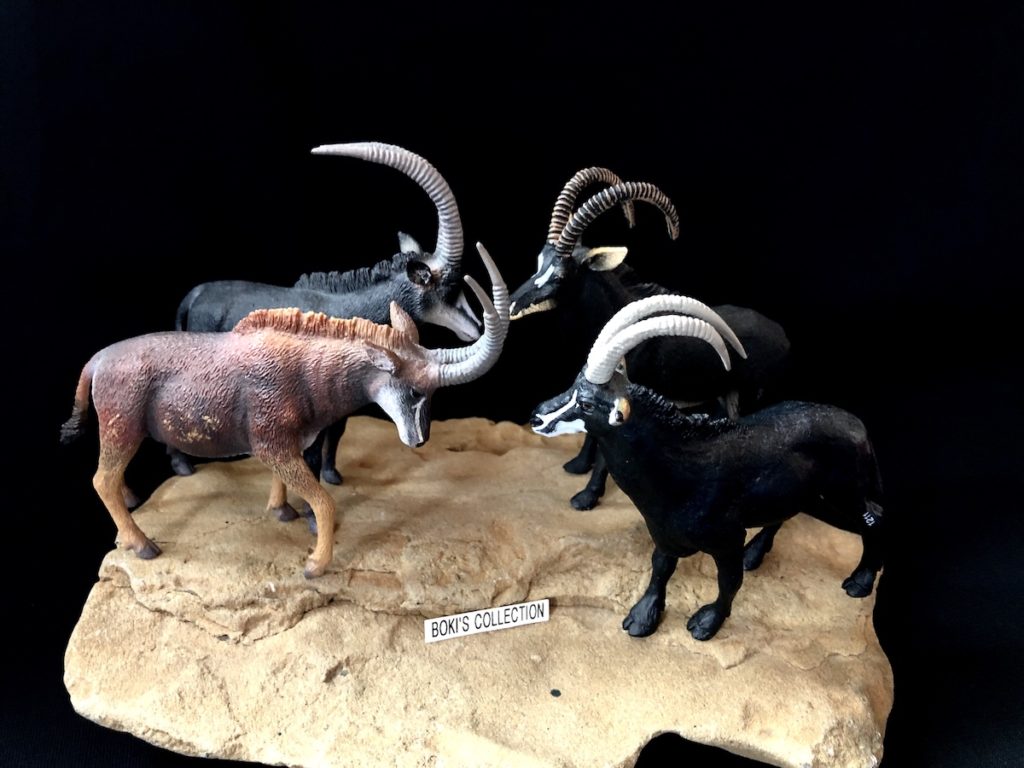
The giant sable antelope is listed as critically endangered by the IUCN and is only found in small numbers in Central Angola. They are so rare in the wild that they have become almost mythical. The long civil war that raged in the region decimated the wildlife populations including the giant sable and made any attempt of rescue or conservation impossible.
For a long time, it was feared that the giant or royal sable antelope is already extinct, but a very small population managed to survived and was a focus of intense race to try and save them from certain extinction.
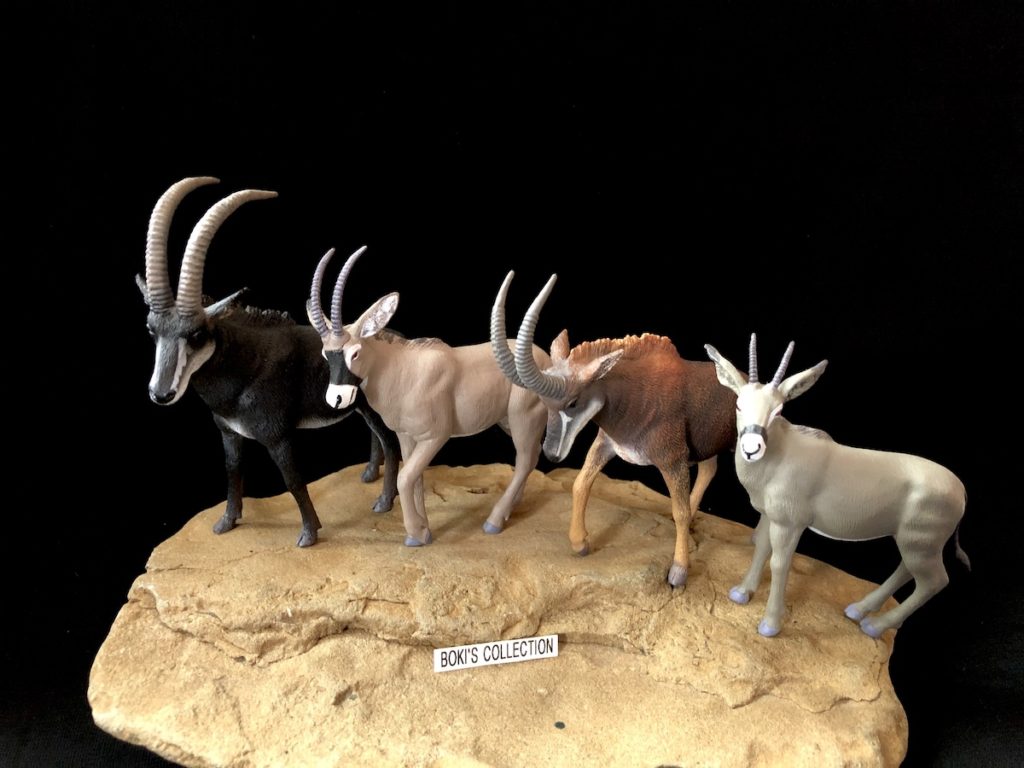
The low population and fragmented habitat added to an already long list of problems. In some areas, some of the last remaining herds of giant sable antelope have lost breeding males and left herds of only females.
This resulted in some all female herds joining Roan antelope, a very close relative that shared the environment, and started breeding with them producing hybrids.
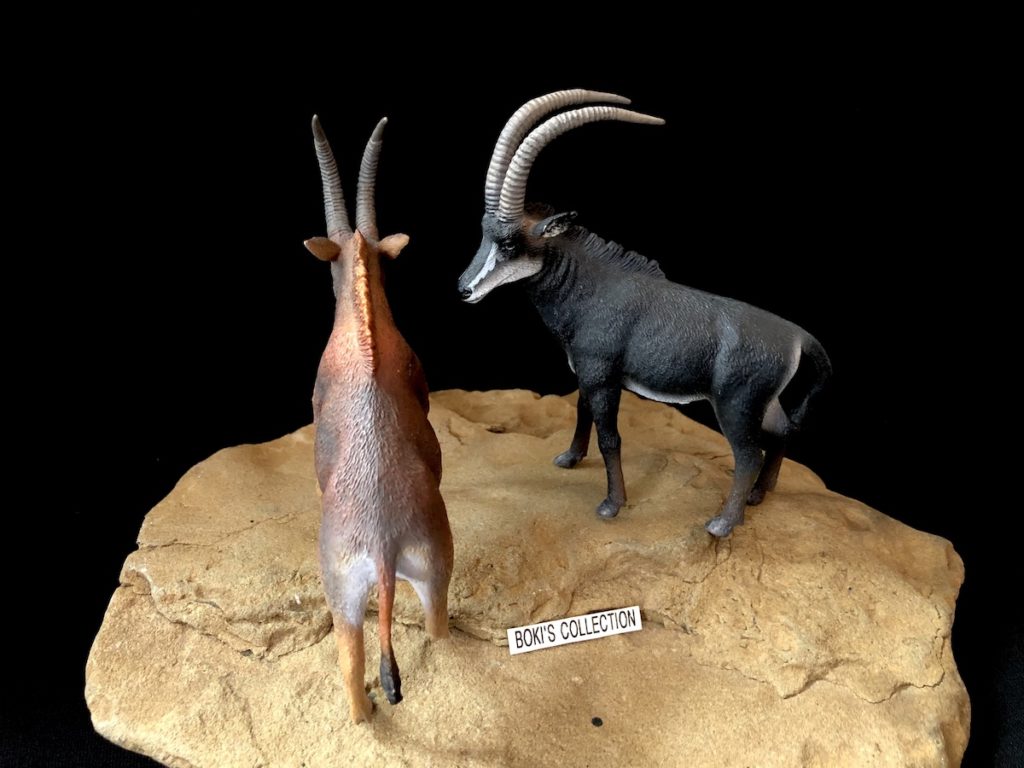
Male – The male exhibits your typical black coat and long curving horns. CollectA really captured the distinct and subtle differences that set the giant sable apart from other subspecies. The horns which are recognizably larger and longer compared to other subspecies, is very well sculpted.
The rings are clearly defined and they grow smaller in size as it reaches towards the tips when it then turns smooth.
The white facial markings are cleanly painted and have a nice blended look to it that makes it natural looking.

The head is beautifully sculpted with lots of details and you can see the hairs as well as veins even against the black and white colors.
The ears are perked up on alert and you can see a little bit of rusty brown highlights on the base which adds a little color to the head.
The black mane that runs down the neck is detailed as well and you can see slight partitions. There are skin folds on the neck on the direction of where the head is pointed which gives a nice feeling of tension.

The body is well proportioned and sculpted. Due to the black colors, some of the delicate details are easily obscured or hard to see, but CollectA did dry-brush a lighter color over the black to help these details pop out more. The musculature is very well defined.
The pose of the male figure is more static, the typical standing pose with not much hint of movements besides the slight turn of the head and the twitching tail.
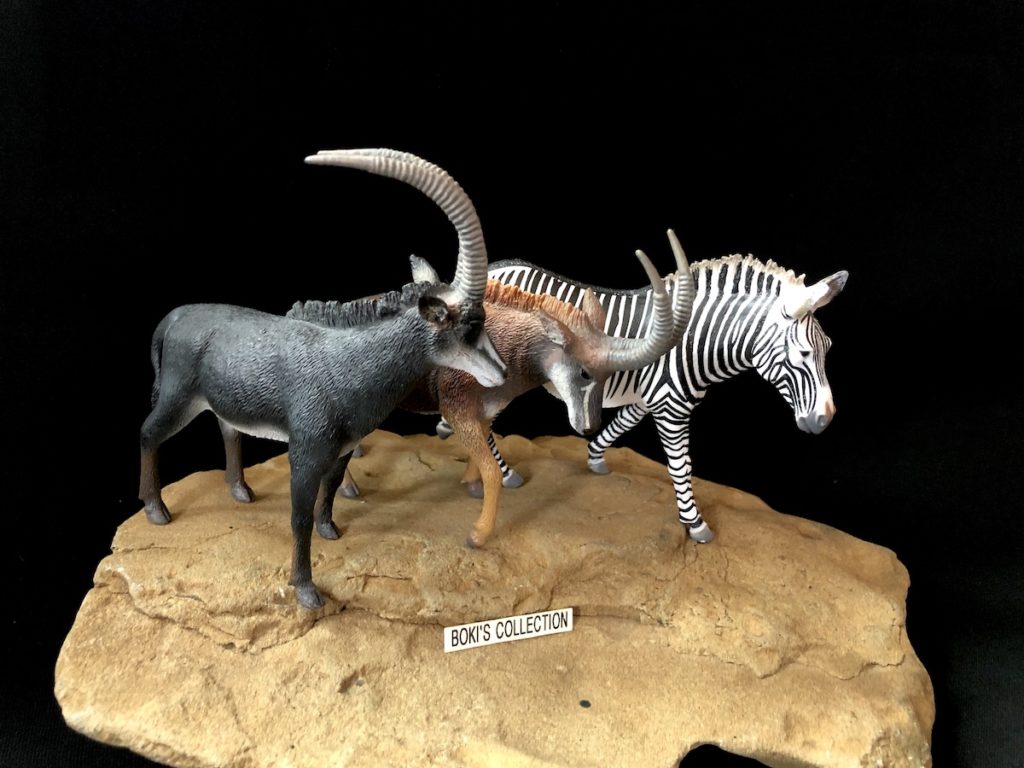
Female- The female is dark chestnut brown with various lighter highlights. This colors contrast with the male’s all black colors. Young ones are also brown colored, and in males they transition to all black as they grow older and reach maturity.
The horns on this figure was modified to make it slightly shorter than the male, but it retains all of the beautiful details. Such small modifications really helps distinguish the sexes and CollectA should be credited for doing this instead of just giving the figure a different color which is the easier route.

Besides the colors, the big difference between the two is how they are posed. On the female, she is in a more active walking pose. Her head is slightly lowered and ears pulled back towards the back ( this could have been originally intended as an aggressive pose).
Her front right foot is slightly raised forward caught in the act of stepping forward.
The body sculpting and detailing is as rich as the males, and the various shades of browns and rust really gives her body more depth and really brings out the finer more delicate details that were obscured in the male.
And as a last finishing touch, if you look under, it is very clear that this is a female
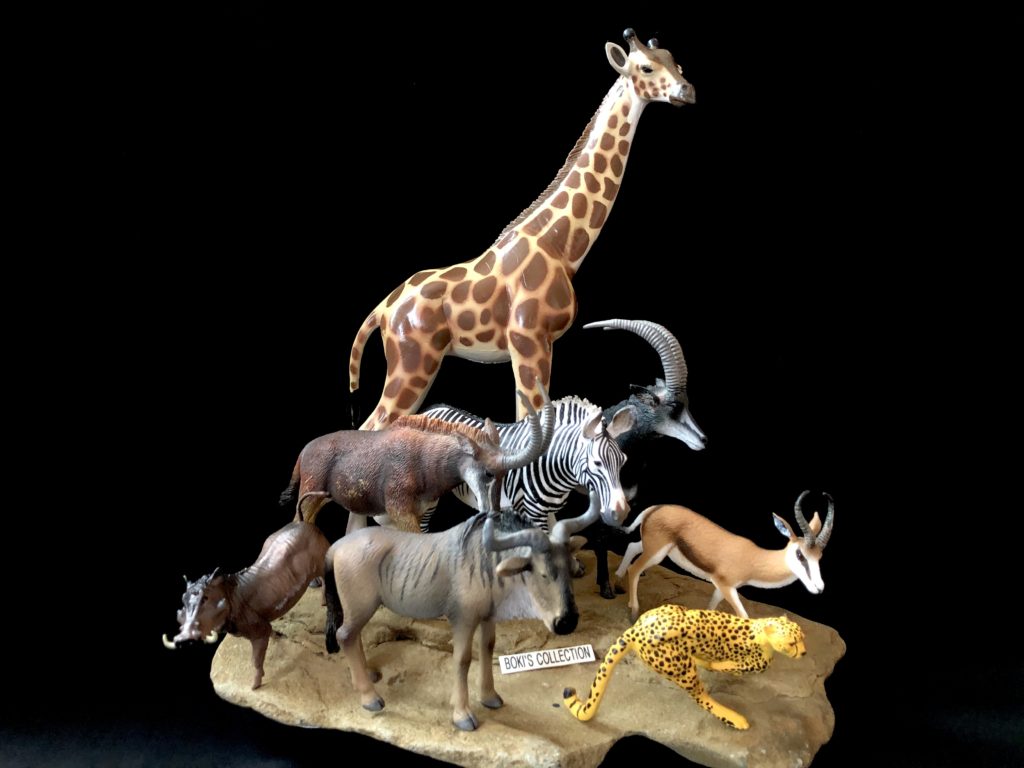
This giant sable antelope pair is truly a unique set to add to any collection. And as far as I know, this is the only true giant sable, others out there are of the common.
Hopefully conservation efforts to the save the species from extinction will be successful. It would be most tragic if we lost the most magnificent subspecies of sable.
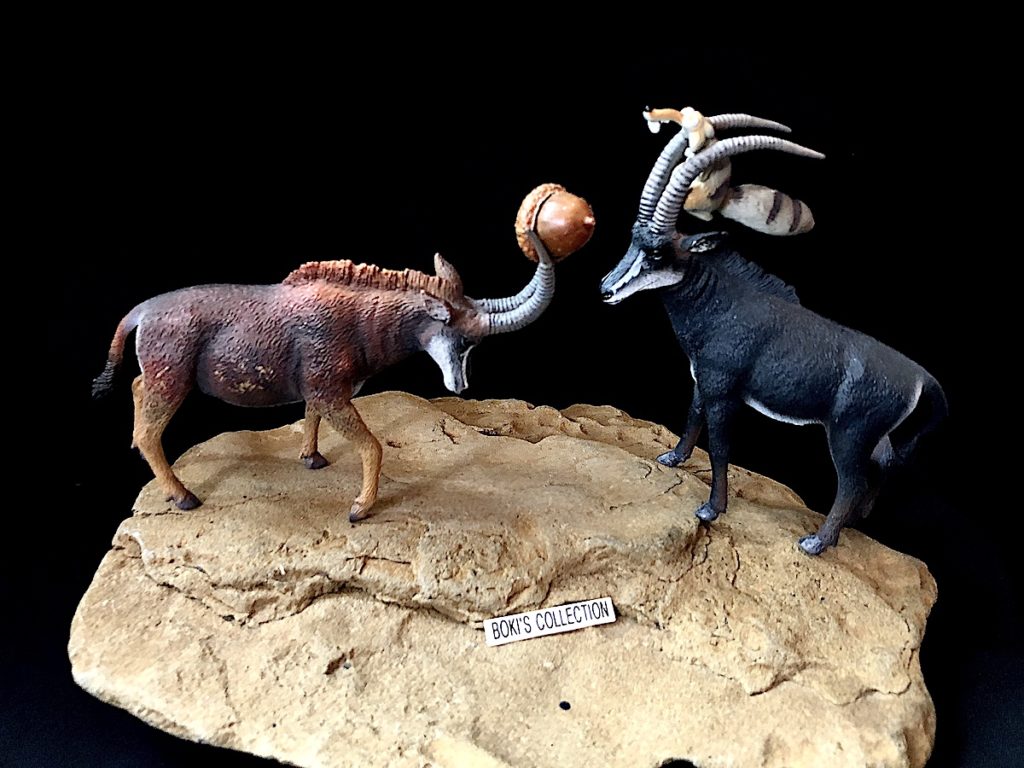
Thanks for reading and hope you enjoyed it. Until the next one, take care. Cheers!
Disclaimer: links to Ebay and Amazon on the AnimalToyBlog are affiliate links, so we make a small commission if you use them. Thanks for supporting us!




I have the male; I will probably get the female this year sometime.
Thanks for photographing next to the Noah’s Pals Roan antelope. This is a figure I have on my wishlist!
Ack! Brain Fart! Correction, my sable is by Mojo Fun (which, according to TAI is also a ‘giant’). I probably would have gotten the CollectA figure, but the Mojo figure was cheap in an eBay lot. But I can still get the CollectA female as his companion.
That’s a superb review with wonderful pictures and rich descriptions.
I followed the development of the Mojö Fun figure since the first step and it is and always was based upon a giant sable. Actually, the Mojö was originally the only real giant not only because of the horns but also because of the head markings. CollectA only changed it later according with what is supposed for a giant sable. The Safari figure is defintely not a giant sable.
The sable advent was one of the most curious of ever. Mojö Fun asked the STS-forum community to choose a species to be released. We’ve made an inquiry and the sable won. Some mounths later, we knew CollectA was also developing a pair of sables and more surprising, Safari released it too. Isn’t it incredible that we never had sable antelopes in several decades and the only four from major brands were all released at the same year?
Great history lesson, Roger! I had forgotten they all came out about the same time. If the Safari figure is not a giant, maybe I should get it, too.